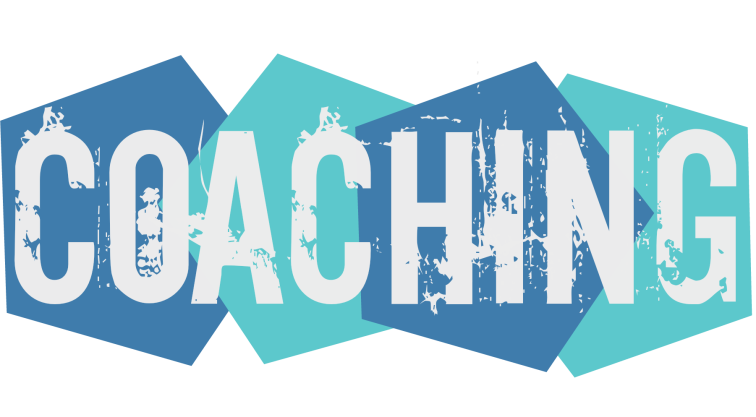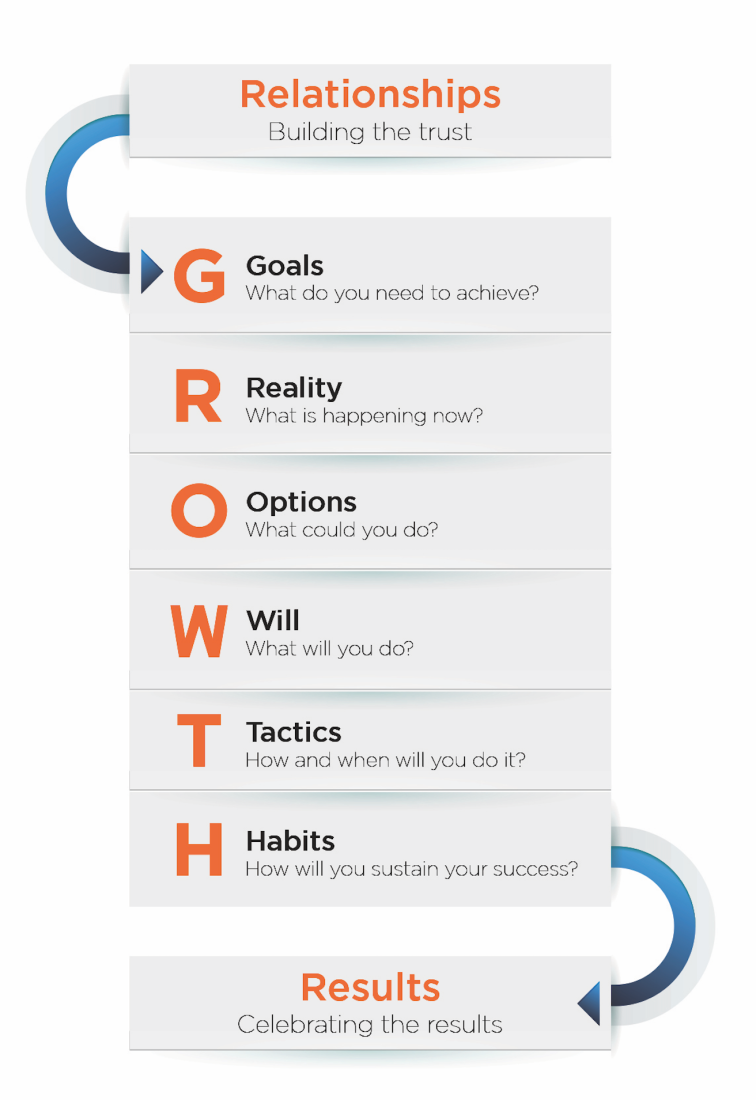 When it comes to having even the shortest conversation, adopting a coaching approach can make a real difference to the effectiveness of the outcomes you achieve. Having a good structure for the conversation is an important starting point. There are lots of models out there, none more well known than John Whitmore’s excellent GROW model. But more recently, a coaching model created specifically with schools in mind has emerged from Australia which works brilliantly for formal coaching sessions as well as everyday leadership dialogue. The GROWTH coaching model developed by Growth Coaching International, has eight key stages, as shown in the model below.
When it comes to having even the shortest conversation, adopting a coaching approach can make a real difference to the effectiveness of the outcomes you achieve. Having a good structure for the conversation is an important starting point. There are lots of models out there, none more well known than John Whitmore’s excellent GROW model. But more recently, a coaching model created specifically with schools in mind has emerged from Australia which works brilliantly for formal coaching sessions as well as everyday leadership dialogue. The GROWTH coaching model developed by Growth Coaching International, has eight key stages, as shown in the model below.
 The first step in the model is to take time to build your RELATIONSHIP. By ensuring good rapport and trust, you are likely to have a much more open and productive conversation.
The first step in the model is to take time to build your RELATIONSHIP. By ensuring good rapport and trust, you are likely to have a much more open and productive conversation.
You are then ready to help colleagues focus on the GOAL they want to achieve. Getting them to frame this as precisely as possible can really help. It can also be helpful to ask what the benefit of achieving the aim will be. If colleagues are clear about the benefits of a change, this really helps to increase the chances of it actually happening. So too can framing an aim in the future perfect tense – the sense that by a certain date they will have achieved their aim, rather than it being something they will do.
The second step is to review the REALITY of the situation, so both you and your colleague have the chance to reflect on the current context. This can also have the benefit of allowing someone to ‘let off steam’ if this is needed! It also allows the person to start to organise their thoughts as well as enable you to ask questions based on what you are hearing that can get to the heart of an issue as well as continue to build rapport. Asking questions that direct the coachee to consider what’s working and look to explore strengths and existing resources can also be particularly helpful at this stage and often leads to potential solutions.
Once the goal and context are clear, you can then focus on their OPTIONS or their strategy. This part of the conversation is about exploring the possible ways of achieving their goal. It’s worth really taking time on this. Just when you think they may have exhausted their ideas, a very powerful question can just be “what else?” It’s amazing what such a simple enquiry can elicit from colleagues. I often find that it is at this point in a conversation that a really helpful new idea or strategy can emerge.
The next stage is to turn the options into the actions that colleagues are going to implement and, in particular, their very next steps. This is what they WILL do. Linked to this are the TACTICS. Pinning these down to specific dates and even times can help them avoid procrastination. Depending on the context, this part of the conversation can involve sketching out a rough plan of action after that. Very often, however, just getting someone started on a next step can be all that’s needed.
The next step is to help colleagues consider how whatever is going to happen or change is going to become a HABIT. Asking about how they will sustain whatever they have decided to do can really make them focus on developing the right routines as an individual that will ensure ongoing benefit from the change.
The final step is to reflect on what has been useful and celebrate the RESULTS of the conversation. Whilst positive affirmations and encouragement can be incorporated at various points throughout the process, making sure you finish with this will hopefully help to leave your colleague feeling positive and upbeat about the future, as well as increase the probability that they will follow-through on the actions they have committed to.
This blog is based on part of the chapter on coaching in the second edition of Leadership Matters, available here.